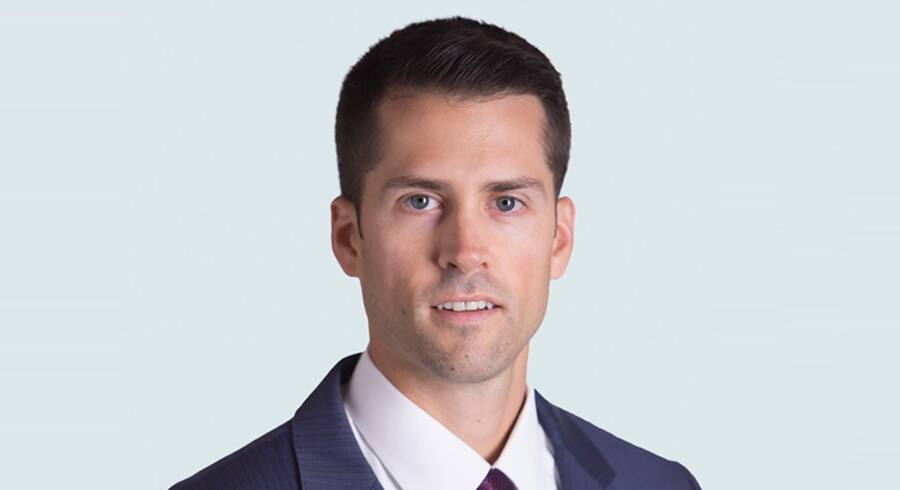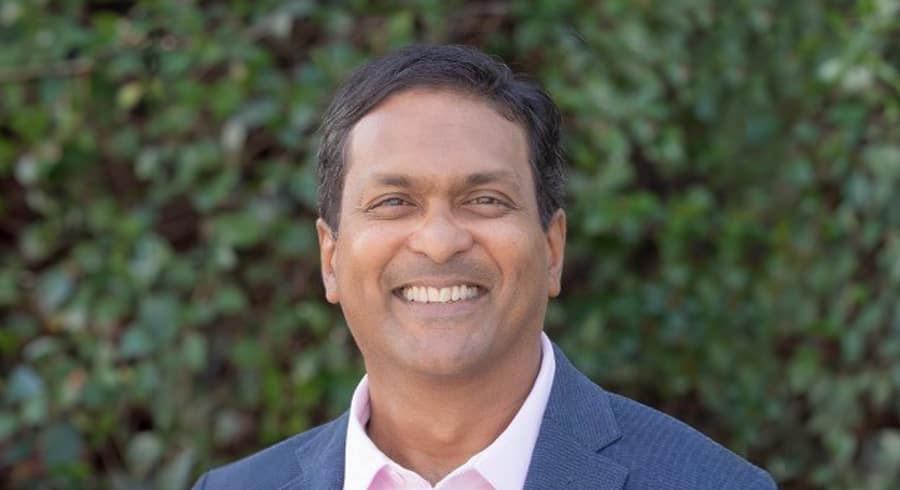Why OCIO Solutions Make Sense for Many Not-for-Profit Investors
As investment challenges grow more complex, an OCIO provider can supply professional management, risk oversight and strategic asset allocation.
Not-for-profit organizations are central to their communities, and making the most of their resources can help them do even more good. But investing not-for-profits’ assets is not simple or easy. Often, the committee members who bear this responsibility must balance the work of creating and executing investment strategies with work more central to the organization’s mission — and it can be difficult to give the time or attention it deserves.
Outsourced chief investment officers (OCIOs) can help. We sat down with Jack Serhant, vice president, head of Solutions Distribution at State Street Global Advisors, and Ravi Venkataraman, managing partner of Chestnut Advisory Group and co-founder of the Chestnut Solutions Institute, to talk about the value of OCIO services and why a strong OCIO partnership may be more beneficial than ever in today’s environment.
Why should a not-for-profit organization be interested in OCIO services?
Jack: First, a lot of these organizations may not have the internal resources to manage their funds effectively. When you outsource this responsibility, it allows the people who used to be in charge of managing funds to focus more on the organization’s mission. Second, an OCIO can help cut costs. A partner like SSGA can combine all assets under management to realize costs savings for the underlying funds we’re managing. And third, some OCIOs can act as a resource for a broad range of services, not just investments. For example, we’re one of the few OCIO providers to offer an in-house custody solution as well as planned giving services, so we can help manage things like gift annuities, charitable trusts, or pooled income funds.
Ravi: An OCIO also brings certain intangible benefits, such as fresh, unbiased thinking. An OCIO provider has the benefit of working with dozens of clients, and they can apply lessons they learn across their client base. They can also bring an objective third-party perspective to stakeholder management. In many cases, not-for-profits have more complex stakeholders than, say, a corporate pension plan. Not-for-profits’ constituencies include management, donors, and the communities they serve. An OCIO provider can bring a lot of resources and perspectives to bear in these situations.
Jack: I’d add one more intangible that OCIOs bring: continuity. Typically, the finance committees in charge of assets for not-for-profits turn over with some frequency, and new members might have different opinions about how to invest assets. You might get totally different investment philosophies and objectives every five years, which is not how you want to manage assets meant to live in perpetuity — especially when those assets include alternatives that are difficult to liquidate. Having an OCIO that stays with you for a long time as a true partner helps you maintain a single philosophy and set of objectives.
What are some common concerns for not-for-profits considering an OCIO, and how would you address those concerns?
Ravi: The most immediate concern, especially for a not-for-profit that has not worked with an OCIO before, is the fear of giving up control. "Is the OCIO going to direct everything and jam a solution down my throat?" The reality is, a healthy OCIO partnership is a two-way street. OCIOs work very closely with their clients and are very attuned to their needs. Maybe 20 years ago they tended to have more one-size-fits-all solutions, but OCIO services have evolved significantly from those days and now can be highly bespoke and optimized to the client’s objectives.
Jack: I would add that some not-for-profits are understandably concerned about choosing the wrong partner. There are a lot of options out there, and we might do things a little differently. If you get into the wrong partnership, it's hard to undo — especially with organizations that lock you into model portfolios, which we don’t do at SSGA. You need to be very thoughtful about choosing the right partner.
What current economic or market factors might make an OCIO especially helpful for not-for-profits?
Jack: Markets are more complex than they were five or 10 years ago. Alternatives have become a greater topic of conversation, and providers need the right resources and scale to be able to manage those sorts of complex assets. There’s also a lot going on from a policy perspective that’s affecting not-for-profits, particularly in higher education. Some organizations are facing staffing challenges, and outsourcing may help provide consistency and reliability. In addition, the potential for tax increases on endowments may have big impacts on the ways portfolios should be allocated. Outsourcing to an OCIO can be useful, because we have people who think about strategies for maintaining performance in the face of major tax changes.
Ravi: I think the economy is at a very interesting point right now. On the one hand, the fundamentals of the economy are strong. We've had strong equity markets, healthy corporate balance sheets, and low unemployment. Fundamentally, America is in good shape. That said, we haven’t seen this kind of policy uncertainty in recent times. The tariff situation seems to indicate that America may be pursuing a more self-sufficient approach, with potentially major economic consequences. OCIO providers tend to be large organizations with a global footprint and the expertise to bring fresh thinking to these sorts of issues. And they often have the ability to be nimbler in their decision-making than some not-for-profits.
What should a not-for-profit look for in an OCIO provider?
Jack: The best OCIO relationships are true partnerships. If you don’t connect with the OCIO provider on an individual level, it might not work out in the long term. One part of this partnership is education. Is the OCIO willing to educate staff and donors on market trends and investment strategies? For college endowments, is the OCIO willing to educate some of the student body? Additionally, it’s important to explore the services beyond investing that an OCIO can provide. I mentioned custody and planned giving earlier; you also might look into services like audit support, expense and payment logging, and vendor invoices.
Ravi: Our industry has a tendency to focus in binary terms on performance and fees, whereas a good OCIO provider will have a three-dimensional focus: investments, operations, and service. Each of those three aspects has many, many components to it. In fact, our institute has just released a holistic evaluation framework specifically for OCIO relationships that may be helpful to plan sponsors. If you look at all those components in light of your not-for-profit’s needs, you might come up with very different answers about who's the right partner for you than if you looked just at performance and fees.
How can OCIOs help not-for-profits advance their missions?
Ravi: Many not-for-profits, like churches or local hospitals, are strongly community-oriented. In these cases, it’s very helpful for the OCIO provider to be part of that community, or at least to understand local dynamics and issues. That way, they’ll be much more attuned to the needs of the organization, and they’ll be more likely to avoid making decisions that might look good on paper but would never fly with the community.
Jack: I’ll give you an example of the way we’ve helped one client with their mission. We started working with a college endowment about 10 years ago. Initially they were very risk-averse due to some bad experiences with alternatives in the past, and they were reluctant to fully give up control over their portfolio. Over time, their position has evolved, and our services for them have evolved accordingly. We reintroduced alternatives into their portfolio and began implementing tactical asset allocation to try to get more out of their invested assets, which made the portfolio a bit more active and complex. Recently, we took on full responsibility for the portfolio, freeing up their committee to focus more on mission-central issues like admissions and tuition. That’s typical of the services we provide, and it illustrates the value of OCIO partnerships in helping not-for-profits deliver on their promises to their many stakeholders.
Key Takeways
- OCIO services can help not-for-profits cut costs and free up time to focus on their mission.
- Two of the most helpful attributes OCIOs can offer not-for-profits are unbiased thinking and nimble decision-making.
- The best OCIO relationships are true partnerships, with solutions tailored to organizations’ goals and context.
- Increased market complexity and economic unpredictability make OCIO solutions more valuable than ever.
To learn more about State Street Global Advisors' investment solutions for not-for-profit plans, contact your relationship manager.
About the Speakers

John Serhant
Client Relationship Manager
Jack is a vice president, senior relationship manager within SSGA's Institutional Client Group responsible for managing institutional corporate and nonprofit clients.

Ravi Venkataraman, CFA
Managing Partner, Chestnut Advisory Group
Ravi co-leads Chestnut’s strategic advisory practice, partnering with asset managers and OCIOs across a diverse mix of asset classes and firm sizes to devise and implement successful growth strategies. Ravi’s distribution, investment consulting, and solutions background informs his advisory work.